Хаас за Мексико
Ромен Грожан:
How much does Mexico City’s altitude affect the car, from engine performance, to brake performance to aero performance?
Brake cooling is an issue because of the air density. From there, we also have very little downforce because we’re at altitude. I guess the biggest thing for us to feel is the downforce loss. The biggest challenge for the car is the cooling.
How much does Mexico City’s altitude affect you physically, especially during the race?
It’s been fine in previous years, but with these new cars, and if the track has rubbered up a little bit, it could be harder.
Grip was in short supply at the Autodromo Hermanos Rodriguez in 2015 and it remained that way last year. What did you have to do to compensate for the lack of grip?
Find the right setup and find the right way to get the tires to work at their best in those conditions, which is always a challenge.
With the higher levels of downforce these current-generation cars achieve, do you expect grip to be less of a factor in this year’s race?
No, I think it’s always going to be the same, because that’s the key to perform. The more grip you have, the better you are. I think even with more downforce, we’re still going to lose the same amount as we did last year in terms of percentage, compared to a normal track. It’s going to be slippery.
Finding grip means getting the tires into their proper working window. With 17 races having been run this season, have you discovered any tricks to the trade in getting a particular tire compound into its appropriate working range, and if so, how do you keep it there?
I guess that’s still our Achilles’ heel. We’re still struggling a bit with getting our tires right. That comes with time and experience. We are getting better. We’re all working hard to find the right answers. Sometimes though, we still don’t have them. We do on some occasions, which is great, but on others we don’t. We just have to come to a racetrack and see, then we try to do our best from there.
Explain what you do in qualifying to get the tires into their proper working range so you can extract the maximum amount of performance out of them for a fast lap.
It depends a lot on the circuit. Some circuits you need a slow out-lap not to heat the tires too hard. Other circuits you really need to push hard on the out-lap to generate the temperature and the grip. It really does change circuit to circuit. We just have to go and see.
After a 22-year absence, Formula One returned to Mexico in 2015. You competed in that race. What was the atmosphere like?
It was a great atmosphere. During the driver parade, I don’t think I’d ever seen such a big crowd than in the last part of the circuit at the stadium section. It was an awesome race with a lot of fans.
The stadium section seems to be the most talked about portion of the Autodromo Hermanos Rodriguez because of its sheer scope. What is it like to go through that area with all the fans in attendance during the driver’s parade, and what is it like to drive through there at speed during the race?
During the race, unfortunately, we don’t get the chance to see the fans. But on the finish lap, after the checkered flag, you really get a chance to see everyone. The podium being there makes for a great image. It looks awesome from the outside.
What is your favorite part about Autodromo Hermanos Rodriguez?
I like the first three corners. They’re pretty good.
Describe a lap around Autodromo Hermanos Rodriguez.
Long straight line going into turn one with big braking, 90 degrees right-hand side, followed by a small chicane. It’s very important to get the second part right because you’ve got another long straight line. Then you’ve got another 90-degree left corner, and then a 90-degree right corner. That’s followed by a very weird double right-hander. It’s very difficult to find a line. Then you go to the middle section which is flowing, with mid- to high-speed left and right corners. Next it’s the entry to the stadium – big braking here, very tricky with the wall facing you. Then it’s a very slow hairpin in the stadium, as slow as Monaco. Finally, it’s the double right-hand corner with very important traction going into the old part of the oval to finish the lap.
Кевин Магнусен: How much does Mexico City’s altitude affect the car, from engine performance, to brake performance to aero performance?
It has a big effect on all those things. It’s one of the tricky races that you have to compromise a lot of things in order to cool the car and find downforce.
How much does Mexico City’s altitude affect you physically, especially during the race?
You don’t really notice it so much. You can feel that the air is thinner, that you have to breathe a bit more, but you get used to it.
Grip was in short supply at the Autodromo Hermanos Rodriguez in 2015 and it remained that way last year. What did you have to do to compensate for the lack of grip?
You need a lot of downforce there. As the air is thin, you lose downforce. It’s pretty tricky. You can see the effect it has on top speeds. Because the air is so thin, you don’t have a lot of drag from the air down the straight. Our maximum speeds go very high.
With the higher levels of downforce these current-generation cars achieve, do you expect grip to be less of a factor in this year’s race?
We will have more grip and we’ll have more downforce, but it’ll still be a low-grip race.
After a 22-year absence, Formula One returned to Mexico in 2015. While you didn’t compete in that first race, you competed in last year’s Mexican Grand Prix. What was the atmosphere like for that race?
The atmosphere is awesome. You have the infield part – the stadium part – and it’s always packed. The Mexican people are really into it. It’s a great atmosphere.
The stadium section seems to be the most talked about portion of the Autodromo Hermanos Rodriguez because of its sheer scope. What is it like to go through that area with all the fans in attendance during the driver’s parade, and what is it like to drive through there at speed during the race?
You notice it on the driver’s parade, for sure. The fans are very passionate.
What is your favorite part about Autodromo Hermanos Rodriguez?
I would say the stadium section.
Describe a lap around Autodromo Hermanos Rodriguez.
Fast, low-grip and difficult.
Гюнтер Щайнер: While Mexico City is next up on the Formula One calendar, the team enjoyed a very warm reception at its home race last weekend at COTA. Talk about all the attention Haas F1 Team received from fans and media alike.
For me, personally, it was the busiest weekend of the year. Obviously, a lot of people wanted to talk with us. I was amazed going out to Haas Hill how many fans were there and how passionate they were. It’s nice to see people with merchandise, wearing hats from Haas. We know they support us. They gave us a very warm welcome. It was a lot more than last year as people are getting used to us. We are still an underdog, but we’re kicking left, right and center. I think we’ve earned our space here. I hope the American fans will support us even more in the future.
It was a busy weekend at COTA. How did you balance it all?
I don’t mind busy. That is what we’re here to do. We’ve got good people working at Haas F1 Team and I trust them fully. I can do more of the public stuff, for the fans and for the media. My job changes depending on where we are. I don’t mind busy.
We saw Renault step up its game last weekend at COTA. While Mercedes has all but settled the championship battle, this midfield battle will be a fight to the finish. Does it seem that in these last three races there’s more parity than ever in the midfield?
It doesn’t get any easier, especially for us, because the bigger teams like Renault have stepped up more than we did in the last few races. It’s up and down, and it’s unpredictable what is happening. Who would’ve thought that’d we’d finish eighth and ninth in Japan? Nobody would’ve given us that credit to work to those positions on merit. Anything can happen in this midfield, and I hope we’re able to make the best out of it.
How much does Mexico City’s altitude affect the car, from engine performance, to brake performance to aero performance?
A lot. It’s very different to anything else. You need your highest downforce level – whatever you can you put on there because of the air being so thin. Cooling – you never have enough up at that altitude. It is different, but we know we have to adapt to it.
Grip was in short supply at the Autodromo Hermanos Rodriguez in 2015 and it remained that way last year. What did you have to do to compensate for the lack of grip?
You always try to get as much downforce as possible. It hasn’t been a favorable circuit for us. We’re not afraid of it, but it will be a challenge.
Finding grip means getting the tires into their proper working window. With 17 races having been run this season, have you discovered any tricks to the trade in getting a particular tire compound into its appropriate working range, and if so, how do you keep it there?
It is a moving target. You never know, there are so many factors coming in from the track that affect how your tires work. We’re surprised every weekend what it does.
Explain what you do in qualifying to get the tires into their proper working range so you can extract the maximum amount of performance out of them for a fast lap.
What you try to do is get the tire to the temperature you want to have it for when you cross the start-finish line. At the beginning of the lap, at turn one, you’re already in the temperature window, then you’re not running too hot when you come out of the last turn. Every track is different and every day is different because of the temperature. It’s a very difficult task, and it’s very difficult to do it mathematically. It also involves a lot of driver feeling – what is best to do. Then with the traffic coming into play, sometimes you want to achieve a target, but you cannot because you’re on your out-lap in traffic and you cannot achieve the temperatures. It’s a very difficult task, but it’s the same for everybody. It’s a lot of planning and there’s a lot of management involved in it.
When the Mexican Grand Prix returned in 2015, Haas F1 Team wasn’t on the grid yet, but you were in attendance. What was the atmosphere like?
It was fantastic. There were a lot of people and everything was sold out. They had to build more grandstands to meet the demand for tickets. It’s a very nice event and this is what’s fantastic about F1. You still get tens of thousands of people coming to an event, and we expect the same this year.



















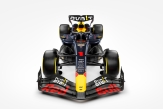


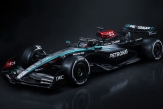
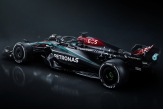


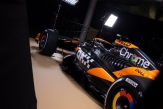

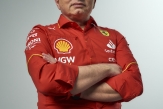
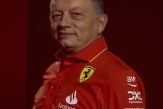
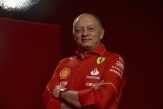

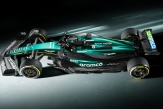





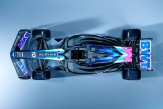








15/04/2024 от Огнян Тенчев (drJeckyll), няма коментари